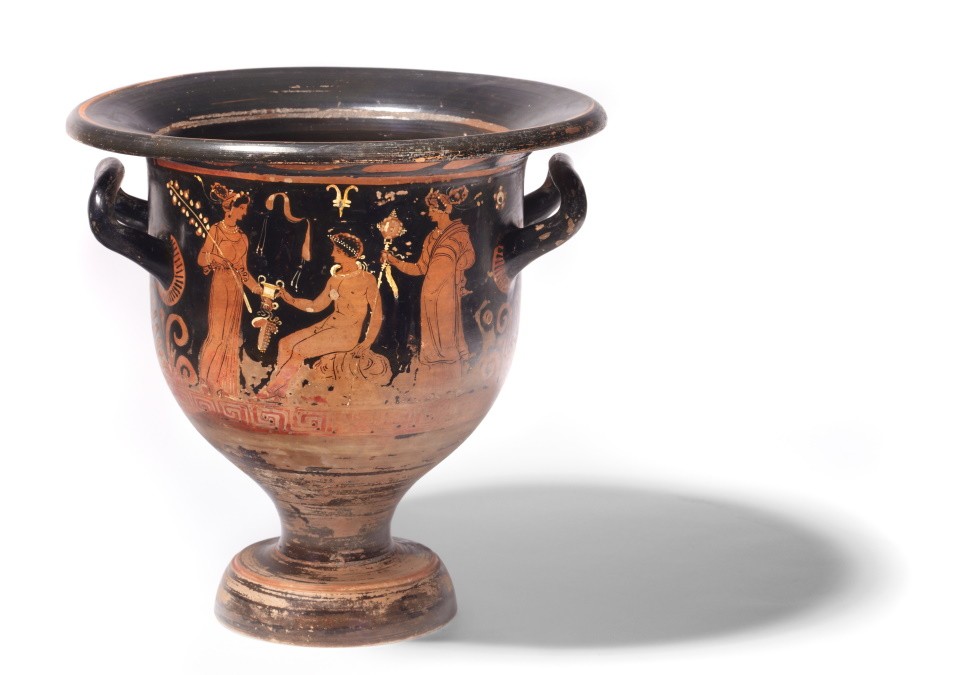Mänaden gehören als Begleiterinnen zum Zug des Dionysos, aber auch zum Kultpersonal für den Weingott. – Der Bochum-Maler steht stilistisch dem Schulman-Maler nahe, dessen ‚Handschrift‘ sich an den Gewandsäumen am Mantelüberschlag seiner Rückseiten-Jünglinge festmachen lässt.
Die apulische Vasenmalerei, die zwischen 430 und 300 v. Chr. eine Führungsposition innerhalb der unteritalischen Vasenmalerei innehatte, ist eine der produktivsten ihrer Zeit. Hauptherstellungszentrum war Tarent. (AVS)
Ehem. Sammlung Georg Wilhelm Rehbock, Hannover
en









